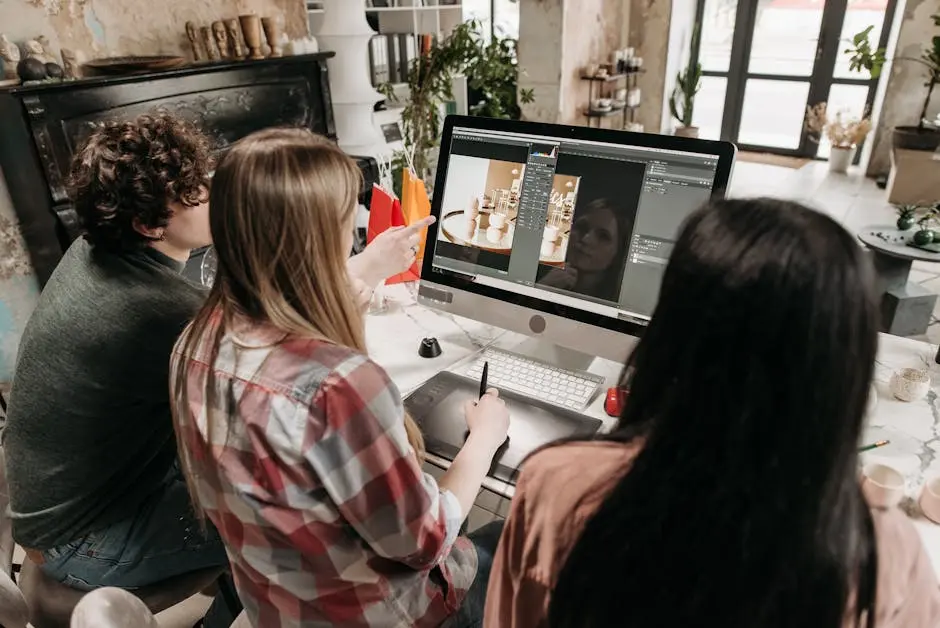7 Tools that Empower Graphic Designers for Fair Compensation

In a world driven by design, graphic designers are the unsung heroes who bridge art with functionality. However, with the ever-evolving landscape of technology, it's crucial for designers to equip themselves with the right tools not just to create captivating visuals but also to ensure they're compensated fairly for their unparalleled skills. This blog explores essential tools that empower designers both in their creative processes and their professional pursuits.
1. Design Software for Masterpieces
Every designer needs robust design software. Apps like Adobe Photoshop and Illustrator are industry standards, offering comprehensive features that translate artistic visions into real digital artworks. However, don't overlook emerging software like Affinity Designer, which provides comparable features at a one-time cost instead of the regular subscription model. This can be a valuable consideration for freelance designers who are mindful of their budget.
3D design is becoming increasingly popular, and tools like Blender offer incredible functionality for creating detailed 3D models and animations. What's more, Blender is open-source, making it a great choice for designers interested in learning 3D design without a financial hurdle. Staying ahead with such software can not only broaden your design capabilities but also increase your market value.
2. Efficient Workflow with Project Management Tools
To manage projects efficiently, apps like Trello and Asana can be invaluable. They help in organizing tasks, setting deadlines, and collaborating with teams, ensuring projects run smoothly and on time. These tools also provide a transparent view of a project's progress, which can be shared with clients to build trust and showcase professional reliability. Customizable boards and the ability to integrate with other tools ensure a seamless and personalized experience.
3. Pricing Designs Right with Estimation Tools
Accurate pricing can be a challenge for designers. That's where tools like Roam's Fee Finder come into play! This innovative pricing calculator simplifies the process of determining how much to charge for your designs. With its easy-to-use interface, you can quickly input your project details and get instant estimates tailored to your specific style and experience. Roam's Fee Finder not only helps you value your work correctly but also boosts your confidence when bidding on projects. Plus, having this tool at your fingertips makes it easier to communicate with clients about pricing, ensuring that you receive fair compensation for your talents. When you effectively leverage resources like Roam's Fee Finder, you increase your chances of securing more projects and cultivating a sustainable income.
Moreover, tools like Freelancer's Guide offer valuable insights into pricing strategies based on industry standards. Understanding these principles helps designers prevent undervaluing their work, ultimately leading to better financial outcomes.
4. Contract Management Made Easy
Establishing clear contracts is vital for professional relationships. Online tools like HelloSign simplify contract management, ensuring designers and clients are on the same page. These platforms offer pre-written templates which can be customized for specific project needs, thus saving time during the setup phase. Also, the ease of electronic signing accelerates the process, allowing quicker project initiation.
For added security and peace of mind, HackerNoon discusses the latest advancements in blockchain-based contracts, providing a compelling alternative for designers who prioritize transparency and security.
5. Showcase Work with Digital Portfolios
A compelling online portfolio can attract potential clients. Platforms like Behance and Dribbble allow designers to beautifully present their work and expand their client base. These platforms also offer social networking features, allowing designers to connect with peers and potential employers directly. Engaging actively on these platforms can lead to featured projects, offering exposure to a broader audience.
6. Time Management Solutions for Busy Designers
Balancing creative projects requires efficient time management. Tools like Harvest aid in tracking time spent on different projects, optimizing productivity and billing accurately. By providing visual reports, these tools make it easy to assess how time is allocated across projects and adjust strategies accordingly. It also helps in identifying areas where time can be saved, which is crucial for busy freelancers.
7. Inspiration from Design Communities
Joining design communities such as Awwwards or Designspiration can inspire creativity and innovation, keeping designers motivated and informed about industry trends. Participating in forums and discussions not only provides inspiration but also offers opportunities for feedback, collaboration, and networking. Connecting with fellow designers can lead to creative partnerships and opportunities that might otherwise go unnoticed.
Roam: Run your design business, not just your projects. Intuitive business management tools for graphic designers.


.png)





